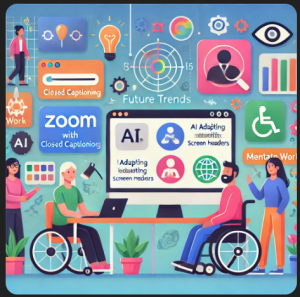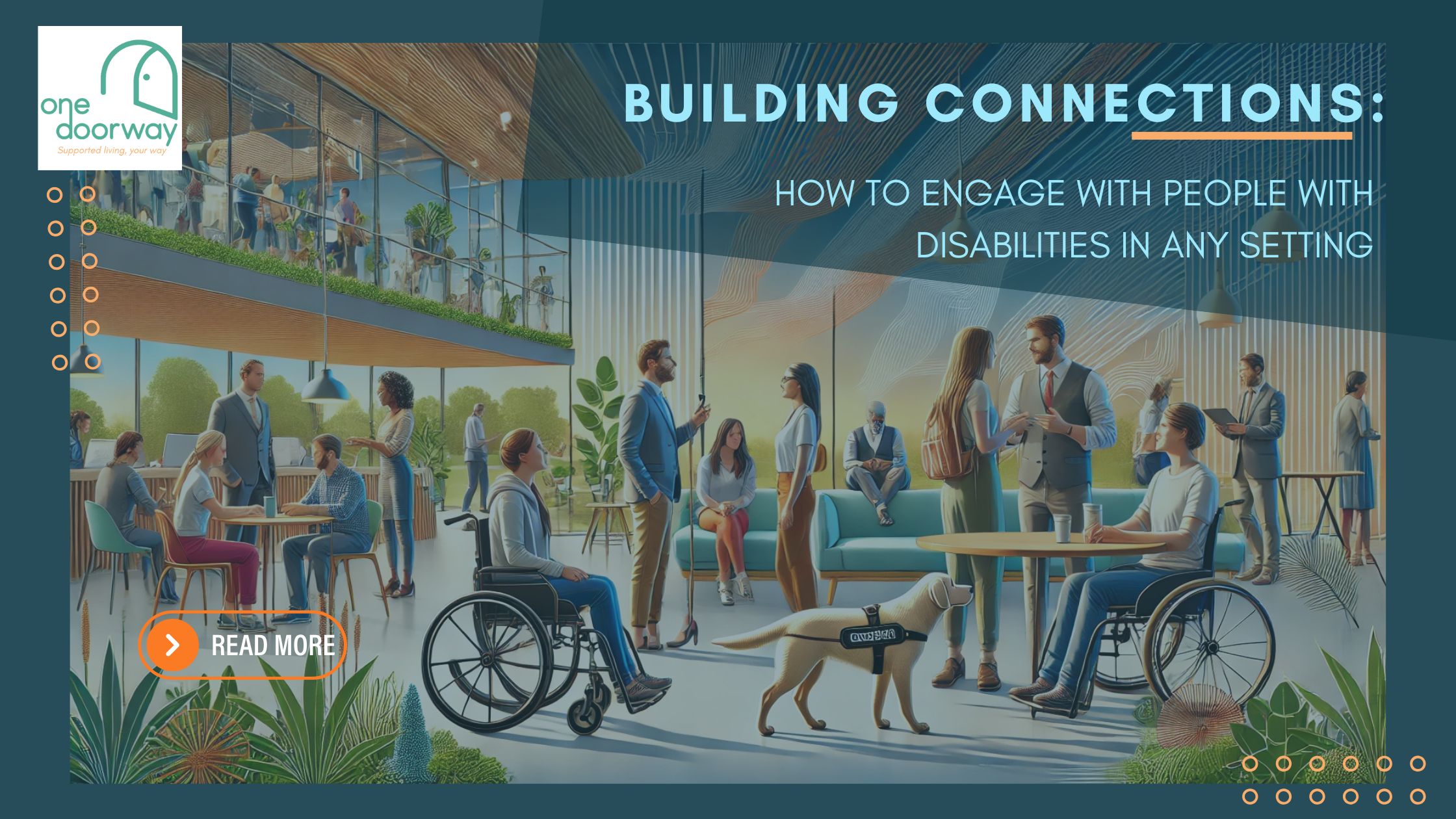The Ultimate Guide to Disability Inclusion in the Workplace

In today’s rapidly evolving professional landscape, fostering an inclusive work environment is more than just a trend—it’s necessary. Disability inclusion is essential for creating a workplace where everyone feels valued and empowered. This comprehensive guide will reveal key strategies and best practices to help companies or organisations focus on workplace diversity and accessibility, unlocking new opportunities for innovation and ensuring all employees, including those with disabilities, have equal chances to contribute and thrive. Whether you’re just beginning your journey toward inclusion or looking to enhance existing practices, this guide offers the insights needed to lead in promoting accessibility and achieving greater disability employment.
The Importance of Disability Inclusion
Understanding and prioritising disability inclusion is about not just ensuring individuals with disabilities are present in the workplace; it’s about actively engaging and valuing them. By recognising the unique strengths and perspectives that people with disabilities bring, companies can ensure equal opportunities for all employees to contribute and grow. Disability inclusion broadens the range of perspectives within a company, leading to more creative problem-solving and innovation, it also fosters employee loyalty, reduces turnover, and enhances the company’s reputation as an employer of choice. Moreover, while compliance with laws like the Disability Discrimination Act (DDA) is important, the ultimate goal should be to embrace diversity as a core value.
The Impact of Disability Inclusion: Key Statistics
Understanding the current landscape of disability inclusion in Australia highlights the urgent need for effective strategies. Here are some key statistics that underscore the importance of fostering an inclusive work environment:
✔️Employment Disparity: Approximately 1 in 5 Australians live with a disability. However, only 53% are employed, compared to 84% without disabilities. This disparity highlights the need for more inclusive hiring practices. (Source: Australian Bureau of Statistics)
✔️Inclusion Benefits: Companies with strong disability inclusion practices experience 30% higher employee satisfaction and 20% lower turnover rates. Furthermore, a 19% increase in innovation revenue is often observed. (Source: Deloitte’s Global Human Capital Trends Report)
✔️Practice Effectiveness: Organisations that implement comprehensive accessibility guidelines for employees with disabilities report up to 40% higher retention rates. (Source: Disability Employment Australia)
✔️Assessment Importance: Regular assessments of disability inclusion efforts are conducted by only 35% of organisations. Improved employee engagement and satisfaction by 25% are noted in those that do. (Source: Australian Human Rights Commission)
✔️Overcoming Challenges: Budget constraints and resistance to change are cited by 60% of companies as major barriers to effective inclusion initiatives. (Source: KPMG’s Disability Inclusion Report)
These statistics underscore the critical need for ongoing improvements in disability inclusion to ensure all employees can thrive.
Key Strategies for Promoting Disability Inclusion
1. Leadership Commitment: Inclusion must start at the top. Leaders create an inclusive environment by setting clear goals, providing necessary resources, and leading by example.
2. Training and Education: Regular training on disability awareness and inclusion is essential for breaking down misconceptions and biases. Equip employees with the knowledge to interact effectively and respectfully with colleagues with disabilities.
3. Accessible Work Environment: Ensure the workplace is physically accessible and that assistive technologies are available. This includes everything from wheelchair ramps and accessible restrooms to screen readers and adaptive software.
4. Inclusive Hiring Practices: It is important to review recruitment processes to eliminate barriers that might prevent individuals with disabilities from applying. Effective strategies include offering alternative interview formats or ensuring job descriptions focus on essential duties rather than physical capabilities.
5. Employee Resource Groups (ERGs): Establish ERGs focused on disability inclusion to provide support, networking opportunities, and a platform for employees with disabilities to voice their concerns and ideas.
Best Practices and Continuous Improvement in Disability Inclusion
This section covers exemplary practices from leading organisations like Google, Microsoft, and ANZ Bank, which have made significant strides in disability inclusion through accessible products, dedicated resource groups, and targeted recruitment programs. It also emphasises the importance of regularly assessing and refining inclusion efforts through employee surveys, retention tracking, and feedback. Additionally, it addresses common challenges such as budget constraints and resistance to change, highlighting the need for a clear plan, ongoing education, and strong leadership support to overcome these obstacles and celebrate progress.
The Role of Technology and Future Trends in Disability Inclusion
Technology plays a pivotal role in fostering disability inclusion by bridging accessibility gaps within the workplace. Communication platforms like Zoom, equipped with closed captioning, and project management software that integrates seamlessly with screen readers, are crucial in ensuring that employees with disabilities can participate fully and effectively. These innovations not only enhance communication and collaboration but also empower individuals with diverse needs to perform their roles with greater efficiency and autonomy, ultimately contributing to a more inclusive and equitable work environment.
As we look to the future, several emerging trends are set to shape disability inclusion. Companies increasingly leverage AI and advanced technologies to create more accessible work environments, with tools designed to adapt to individual needs. Additionally, the rise of remote work is becoming a critical component, offering flexible opportunities for people with disabilities to contribute without the physical barriers of traditional office spaces. There is also a growing emphasis on mental health inclusion, recognising the importance of supporting employees with invisible disabilities. These trends indicate a shift toward more holistic and personalised approaches to inclusion, ensuring all employees can thrive in the workplace.
Final Thoughts
In conclusion, disability inclusion in the workplace is more than just a trend—it’s a commitment to fairness, diversity, and innovation. By implementing the strategies outlined in this guide, you can create a work environment where all employees, regardless of their abilities, can thrive. Remember, inclusion is an ongoing journey, not a destination. At One Doorway, we support and advocate for individuals with disabilities through tailored services and comprehensive support. We aim to ensure that everyone has equal opportunities and feels valued in their personal and professional lives. If you want to enhance your inclusion efforts or need support, visit One Doorway today. Together, we can create a more inclusive and equitable future for all.



